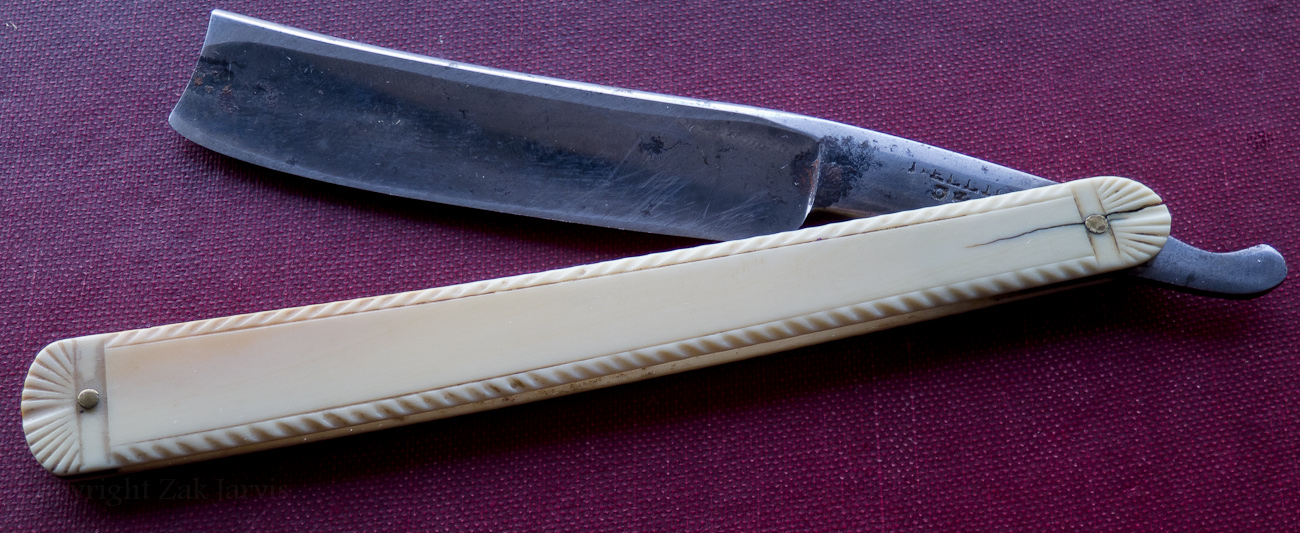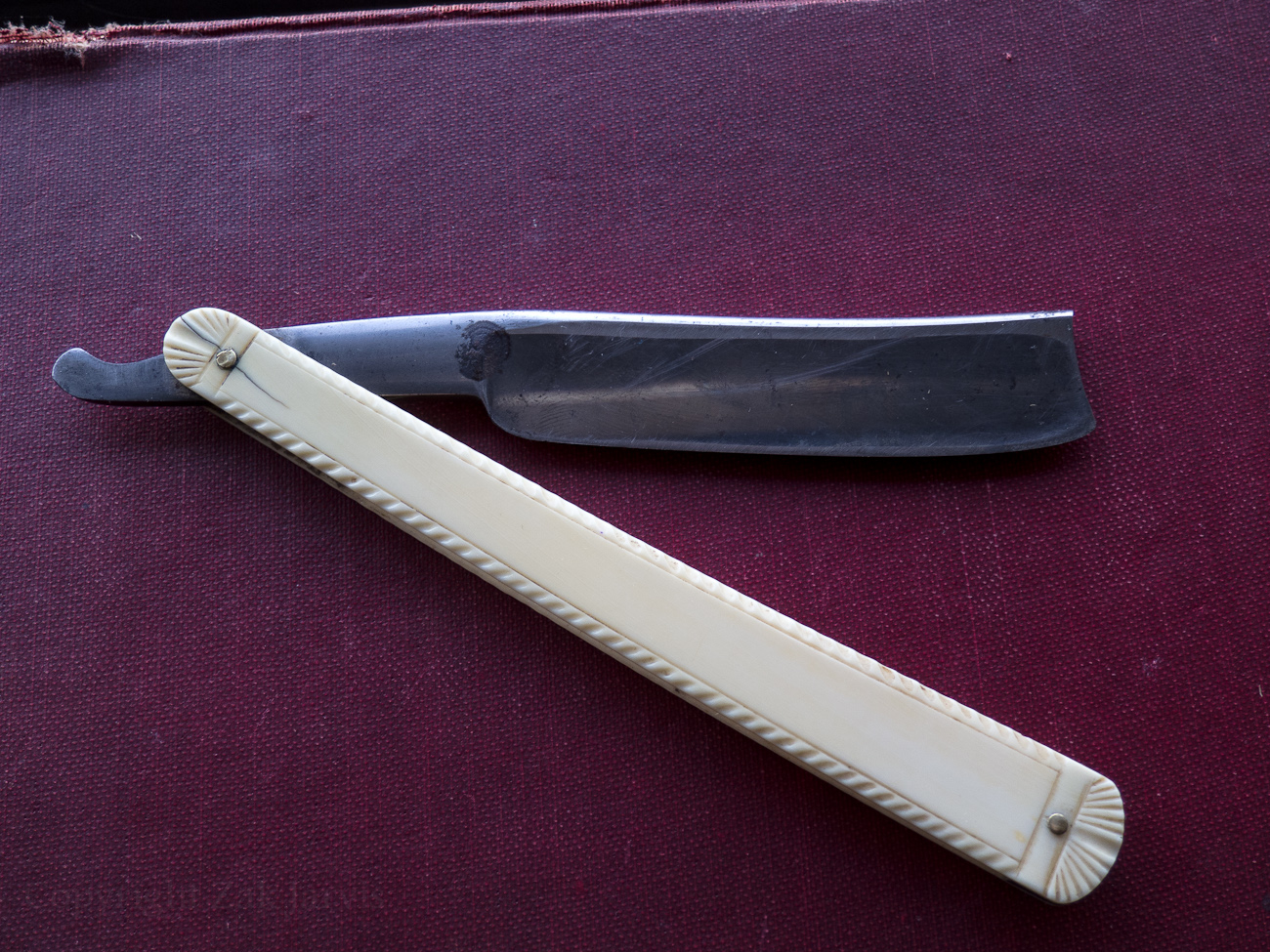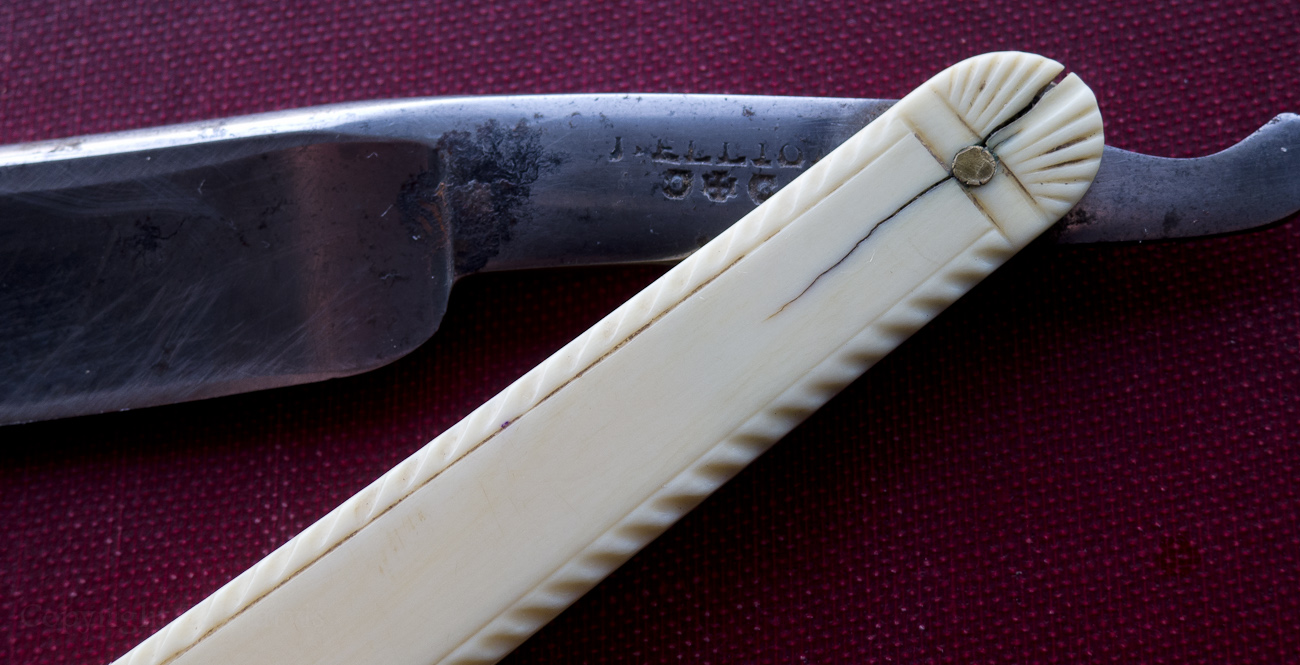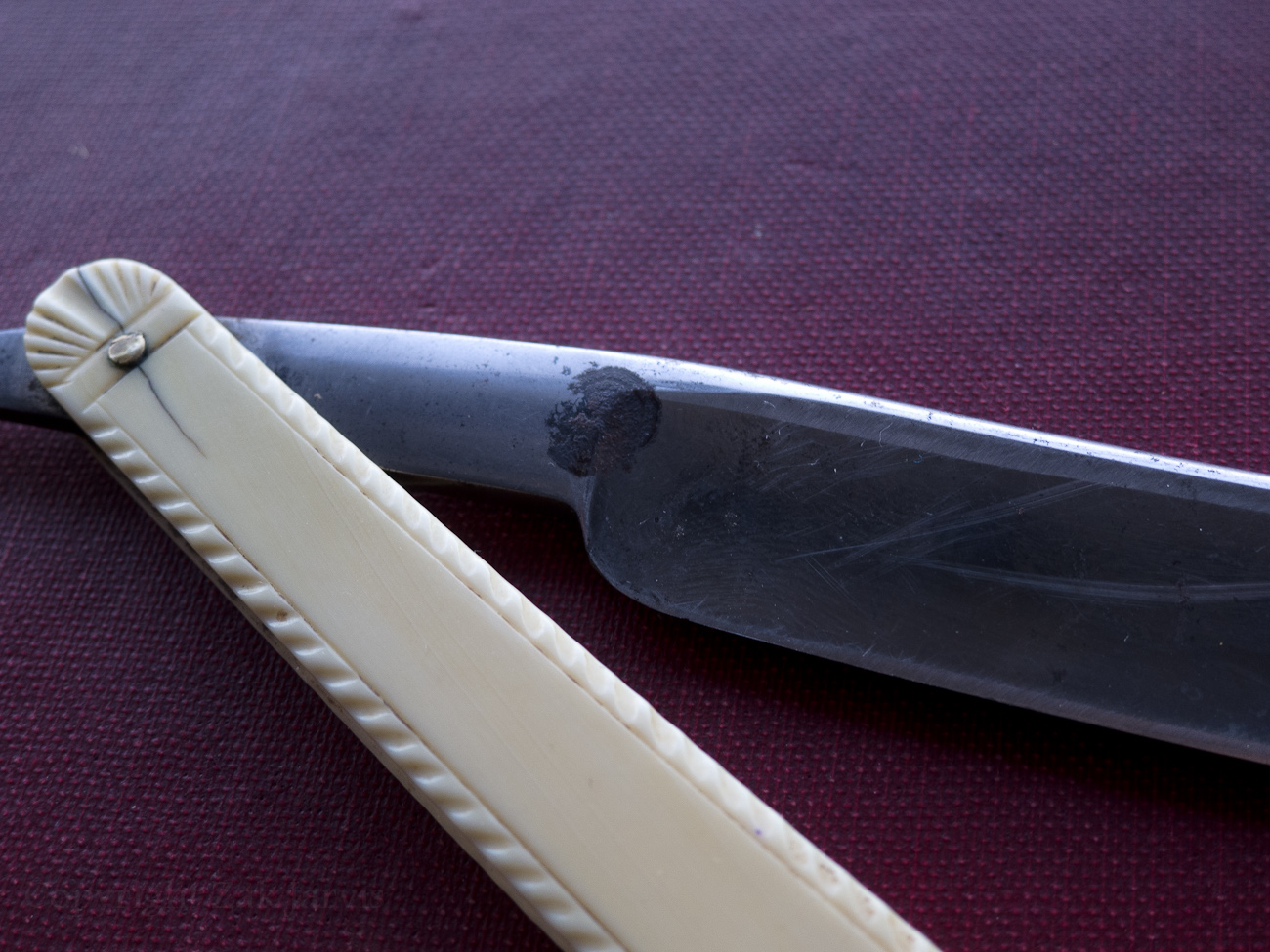Results 1 to 10 of 24
Threaded View
-
01-10-2013, 05:04 AM #1
 Ivory-scaled 1820's Joseph Elliot restore
Ivory-scaled 1820's Joseph Elliot restore
This will be split into two parts. Part one will be about the original condition of the razor.

Coming up with a date of manufacture for this is fairly difficult. It has transitional features from the early 1810's, 1820's and 1830's. I'm going to split the difference and go with early 1820's, mostly because of the partial stamping. There was clearly room for the full name, but it's reduced an initial.
The blade is on the 6 side of 5/8 with a rounded tang and somewhat stubby tail. The grind of the blade is very light.


The stamp is only partial, but Elliot's trademark makes it completely unequivocal. When I got it, the scales were cracked on both sides.

The last time it was used it was put away wet. You can see the rust spots where water was held against the steel by the ivory. On the pile side you can even count the rings of day-night cycles of drying. Three of them. Where the point of the blade rested in the scales, on the inside is a fair bit of rust staining of the ivory.
However, for all that, it's in surprisingly good shape for a razor of it's age. There were a few features of the wear that made it a bit more difficult to fix up than I had anticipated.
Someone tried to tighten the scales and managed to crack it. I'd guess it was in use for a good while after because the cracks have verdigris worked deep into them from the brass pins. The front scale fared worst. The tightened pin pressed down far enough into the scales that the crack was held open, apparently for years, because it had warped. After drilling out the pivot that crack remained open.
After I'd removed the blade I put the scales into an ultrasonic jewelry cleaner to get the really deep-down grime out, or at least most of it. Ivory usually warps a little bit after being immersed in warm water for a while, and this was no different. However it manifested a third crack on the front face of the wedge end.
My goal from here was to make the cracks as invisible as possible as well as restore the blade to something resembling factory finish. If the blade had had more patina, I would likely have polished it up and kept it, but the finish was surprisingly clean.
In the next part I'll show the finished restore and talk about how I did what I did.-Zak Jarvis. Writer. Artist. Bon vivant.
-
The Following 4 Users Say Thank You to Voidmonster For This Useful Post:
BobH (01-10-2013), carrolljc (11-16-2014), cheetahmeatpheonix (01-12-2013), sharptonn (01-10-2013)


 35Likes
35Likes LinkBack URL
LinkBack URL About LinkBacks
About LinkBacks







 Reply With Quote
Reply With Quote